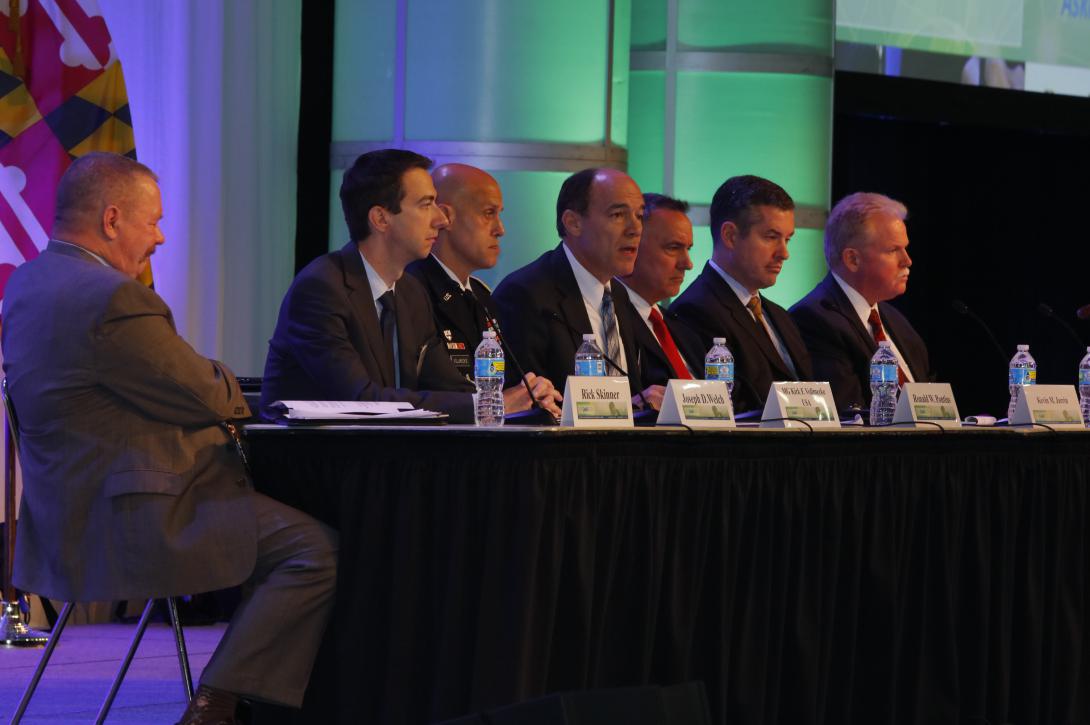Winning Wars at the Speed of Cyber, Not Acquisition Cycles
Even as the U.S. Defense Department’s designated Cyber Mission Force reached the key milestone of initial operating capability in October, operators still are struggling to figure out “fighting in the cyber domain."
Even as the U.S. Defense Department’s designated Cyber Mission Force reached the key milestone of initial operating capability in October, operators still are struggling to figure out “fighting in the cyber domain,” said Lt. Gen. Alan Lynn, USA, director of the Defense Information Systems Agency. Leaders are looking to strike the perfect balance between the competing priorities of speed, security and cost.
The agency constantly engages in multiple cyber operations to defend the network—facing a whopping 1.1 billion events each month, said Gen. Lynn, who also is commander, Joint Force Headquarters–Department of Defense Information Networks, during MILCOM 2016, an international conference for military communications that took place November 1-3 in Baltimore. Of the 43.3 million emails processed each day by the agency, commonly known as DISA, 84 percent are blocked because of malware, viruses, spam or phishing incidents. And that is just email, he said. DISA’s access control list blocks 300 million attempts daily to get into the system—figures that underscore the rapid need for secure communications.
The formidable focus on offensive and defensive cyber missions illustrates but one of the challenges of modernizing the Defense Department, officials shared during the conference, now in its 35th year and co-hosted by AFCEA International and the Institute of Electrical and Electronics Engineers, or IEEE. Fifteen years of continuous war has left the military with little opportunity for upgrades beyond troops’ immediate battlefield needs, offered Kenneth Bible, the Marine Corps’ deputy director of command, control, communications and computers (C4) and deputy chief information officer. Efforts to sustain troops and equipment have taken a toll on training and readiness, making operational priorities and capabilities a highly relevant topic as leaders grapple with shaping the force of the future, echoed Maj. Gen. Bruce Crawford, USA, commanding general of the U.S. Army Communications-Electronics Command. In addition to focusing on troop readiness, the military of the future must embrace maneuverability in a number of areas: networks, spectrum, satellite constellations, transportation and bandwidth allocation, to name a few, added William Lasher, deputy chief of staff, G-6, U.S. Army Forces Command.
But in its quest for solutions to innovate the force, the military cannot afford to trade speed for security or lower costs, panelists and keynote speakers reminded the audience of service members, industry representatives and members of academia. The Defense Department requires all three, seeking solutions that include software-defined networking, secure mobile platforms, network functions virtualization and analytics, in particular, to improve network capabilities for U.S. and coalition forces.
While some attention certainly should be devoted to those developing technologies, Maj. Gen. Earl Matthews, USAF, (Ret.), former director of cyberspace operations and chief information security officer for the Air Force, offered this sobering thought: The military force that controls use of the electromagnetic spectrum will be the victor of the next war. Attaining supremacy within that crucial domain should be driving emerging technologies, said Matthews, now vice president for Enterprise Security Solutions, U.S. public sector, Hewlett Packard Enterprise.
The greatest threat to the freedom of movement within the cyber domain will be a catastrophic event brought on by use of weapons of massive destruction (WMD) or methods producing WMD effects, he added. “While WMD attacks are kinetic, physical attacks, they may have profound effects in the cyberspace domain, specifically degrading or destroying key cyber-based vital infrastructure,” Matthews said.
MILCOM 2017 is scheduled to return to the Baltimore Convention Center October 23-25.
For full event coverage, including videos, photos and presentations, go to url.afcea.org/MILCOM16archive.






Comments